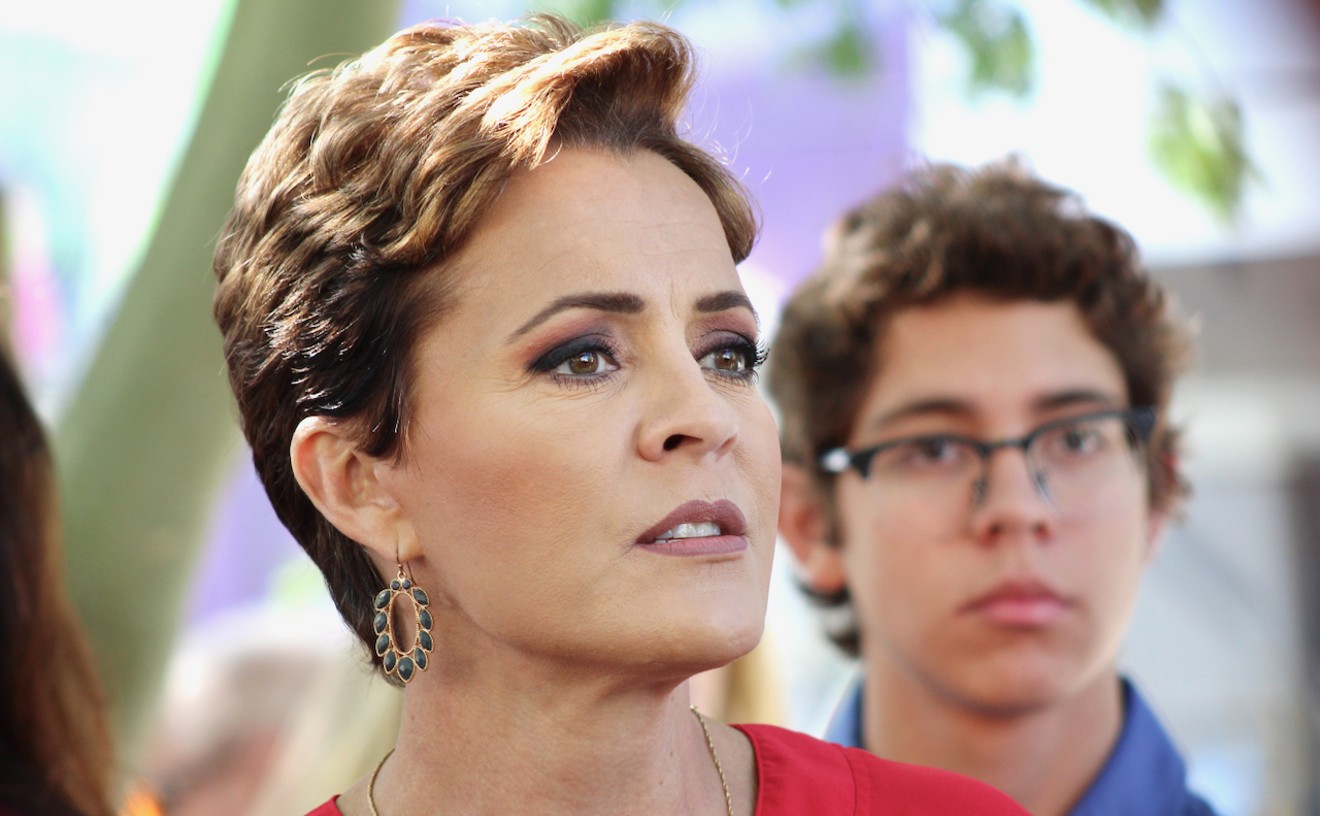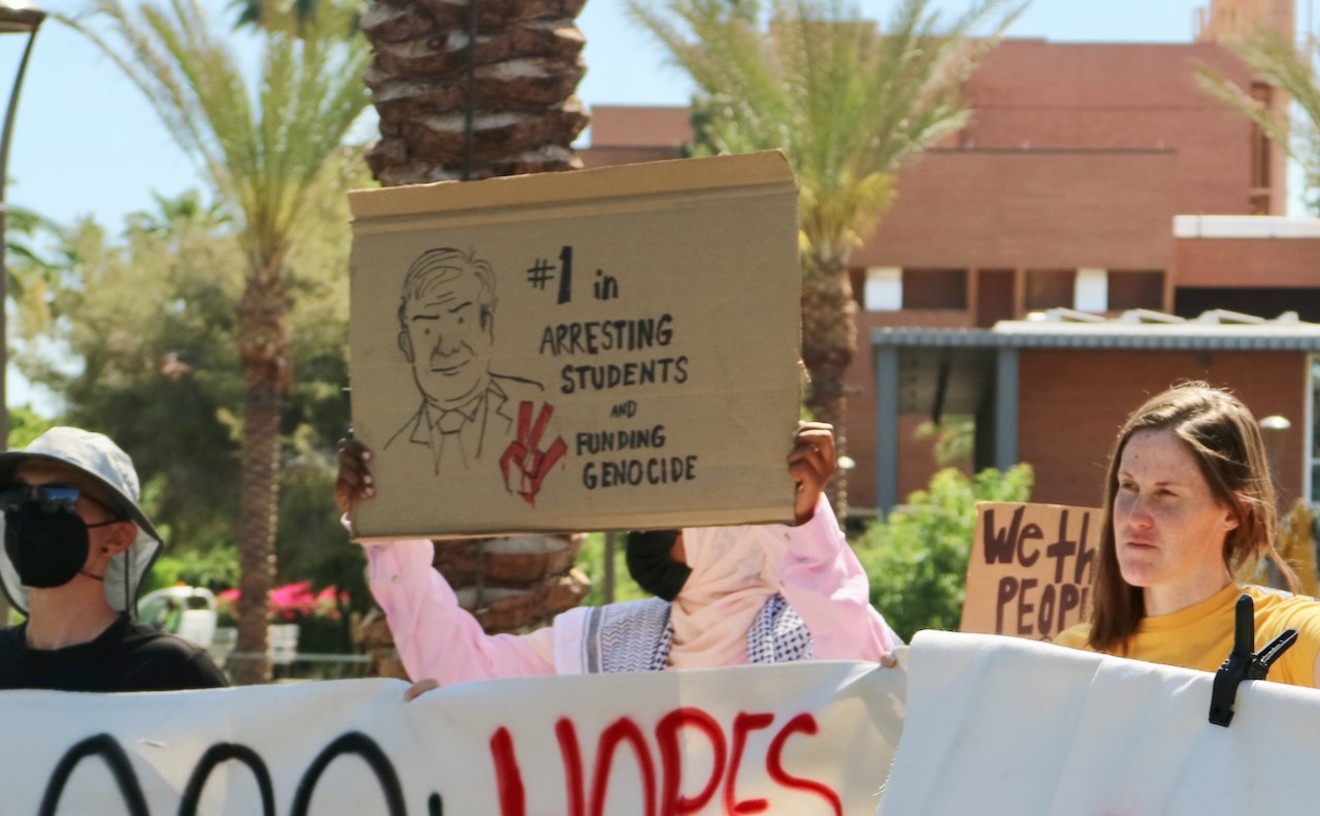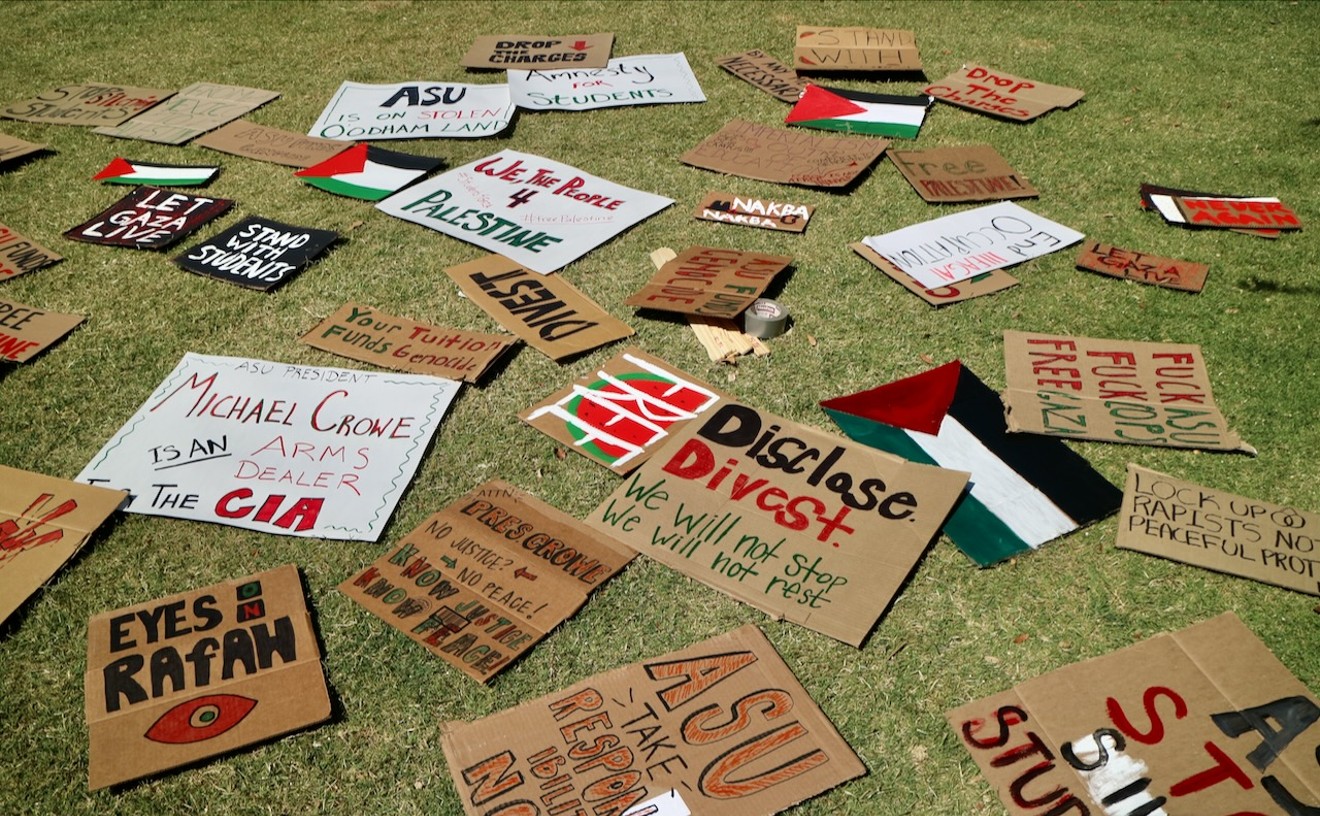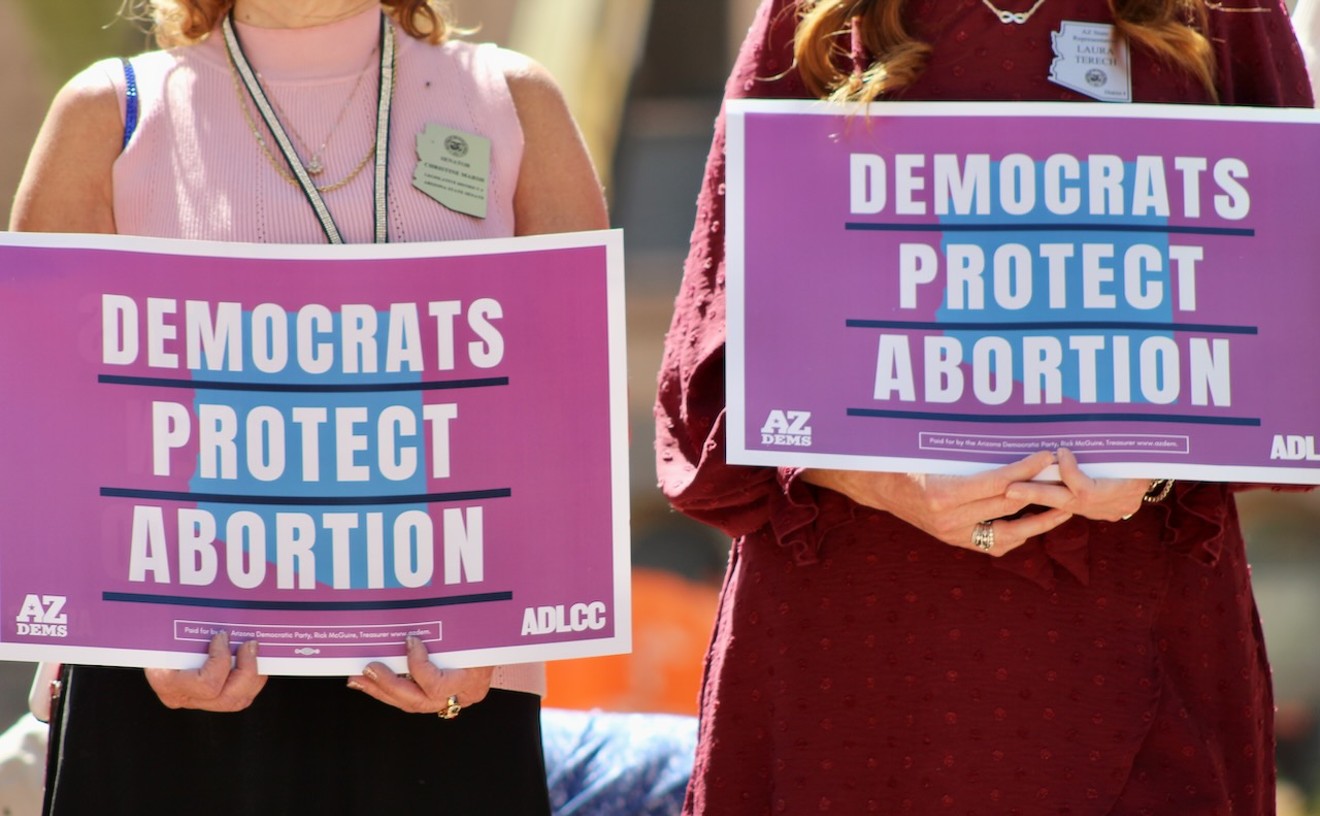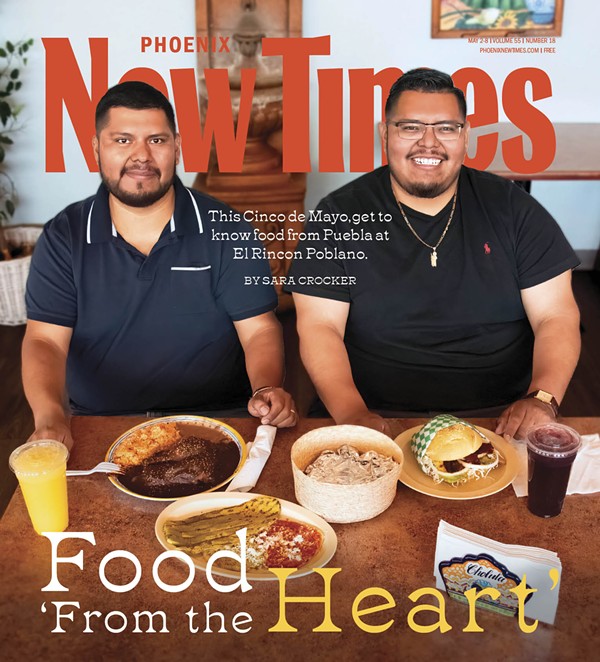The study, conducted by Tempe police earlier this year, is now being reviewed by prosecutors to help determine whether Uber safety driver Rafaela Vasquez deserves to be criminally charged in the March 2018 crash, which resulted in the death of 49-year-old Elaine Herzberg.
New Times asked Tempe police for the lighting study results following the November 19 release of a report on the crash by the National Transportation Safety Board. The new NTSB report states that the crash in Tempe was primarily caused by "the failure of the vehicle operator to monitor the driving environment and the operation of the automated driving system because she was visually distracted throughout the trip by her personal cell phone."
Herzberg had been walking her bicycle across Mill Avenue just south of Curry Road at about 10 p.m. when Uber's Volvo SUV slammed into her at 39 mph. She died at a hospital shortly after.
A video released by Uber of the vehicle's view of the crash shows the woman popping out of the darkness just before impact. That led Tempe Police Chief Sylvia Moir and others to conclude there was no way the crash could have been avoided. However, Tempe investigators later concluded that the crash was "entirely avoidable."Lighting was so good that "the victim would easily have been seen without headlamps." — Detective Greg Bacon, Tempe PD
tweet this
The lighting study was ordered by Yavapai County Attorney Sheila Polk in March after her office found that Uber, the company, hadn't committed a crime in Herzberg's death. But she indicated that Vasquez was still on the hook for possible criminal charges.
Polk had taken the case last year because former Maricopa County Attorney Bill Montgomery had a conflict of interest due to his office's work with Uber. The case returned to the Maricopa County Attorney's Office after the appointment last month of the new county attorney, Allister Adel, who will oversee the decision on whether to charge Vasquez.
Polk, in March, said that her office had concluded that the collision video released by Uber last year "likely does not accurately depict the events that occurred."
She said that experts needed to analyze the video to "closely match what (and when) the person sitting in the driver’s seat of the vehicle would or should have seen that night given the vehicle’s speed, lighting conditions, and other relevant factors," Polk wrote.
Wolf Technical Services of Indiana conducted the lighting analysis for Tempe police in July and produced a 20-page report (below). It states that street lamps along that stretch of Mill Avenue, which it determined were all operating on the night of the crash, made illumination levels "two to three times higher than those necessary to support color and fine detail vision for a human driver with normal vision."
"It is our opinion," the report continues, "that Ms. Herzberg could have easily been seen by Ms. Vasquez even if the Volvo’s headlamps had been turned off."
Further, the report says that as long as Vasquez met the minimum visual acuity for a driver's license under Arizona law, and with the lighting conditions at the scene, she "could have seen and recognized that a person was walking across the road from a distance of 1700 feet away with or without the Volvo’s headlights."
The Maricopa County Attorney's Office has received the Tempe lighting report, and the case regarding Vasquez "is still under review," said the office's spokesperson, Jennifer Liewer.
The Uber crash shocked the self-driving car industry last year, and it has been examined from many angles. Numerous factors came together that night in 2018 to cause the tragedy, NTSB investigators found.
Last year, the NTSB's preliminary report found that the vehicle hadn't applied its brakes, that the Volvo's factory-installed crash avoidance system had been disconnected, and that while the Uber vehicle's autonomous system detected Herzberg before impact, the vehicle relied entirely on Vasquez to take emergency action.
Records show that Vasquez's phone was streaming a TV show at the time of the crash, and video footage from inside the vehicle shows Vasquez looking at something below the dashboard until about one second before impact. She denied to investigators on the night of the crash that she was looking at her phone at the time. She has made no further statements since then.
Yet the November 19 NTSB report pegs the crash squarely on Vasquez.
"Had the vehicle operator been attentive, she would likely have had sufficient time to detect and react to the crossing pedestrian to avoid the crash or mitigate the impact," the report states. "The vehicle operator’s prolonged visual distraction, a typical effect of automation complacency, led to her failure to detect the pedestrian in time to avoid the collision."
New Times has pointed out in previous articles that Uber's video did not accurately show conditions at the scene, showing the location as being much darker than it really is.
A streetlight is nearly just above the crash site, and a GoPro video made by New Times of the scene at the same time of night about a week after the crash showed more light on the road than the Uber video depicted.
Wolf Technical Services' report states that its experts tried to determine why the Uber video "was so underexposed. But, no explanation is apparent."
Vasquez could not be reached for comment.
Uber didn't answer questions about the video, but said in a statement to New Times that it gave investigators plenty of information about the crash.
"Over the last 20 months, we have provided the NTSB with complete access to information about our technology and the developments we have made since the crash," said Nat Beuse, Uber ATG head of safety. "While we are proud of our progress, we will never lose sight of what brought us here or our responsibility to continue raising the bar on safety.”
The new NTSB report also listed contributing factors to the crash, including Herzberg's likely impairment by meth, and the state's complacency in developing safety procedures.
"Arizona’s lack of a safety-focused application-approval process for automated driving system (ADS) testing at the time of the crash, and its inaction in developing such a process since the crash, demonstrate the state’s shortcomings in improving the safety of ADS testing and safeguarding the public," the report states.
Governor Doug Ducey gushed about the lack of regulations in December 2016 when offering Uber a chance to conduct its experiments on Arizona roads.
"Arizona welcomes Uber self-driving cars with open arms and wide open roads,” he said at the time. “While California puts the brakes on innovation and change with more bureaucracy and more regulation, Arizona is paving the way for new technology and new businesses.”
Ducey ordered Uber to halt its program in Arizona following the crash. Uber soon pulled up its stakes and moved the operation out of Arizona. It's still testing in other states, but now uses two safety drivers instead of one.
Below: comparison of the Uber crash video (left) with a GoPro video taken by New Times of the same scene a few days after the March 2018 crash.







